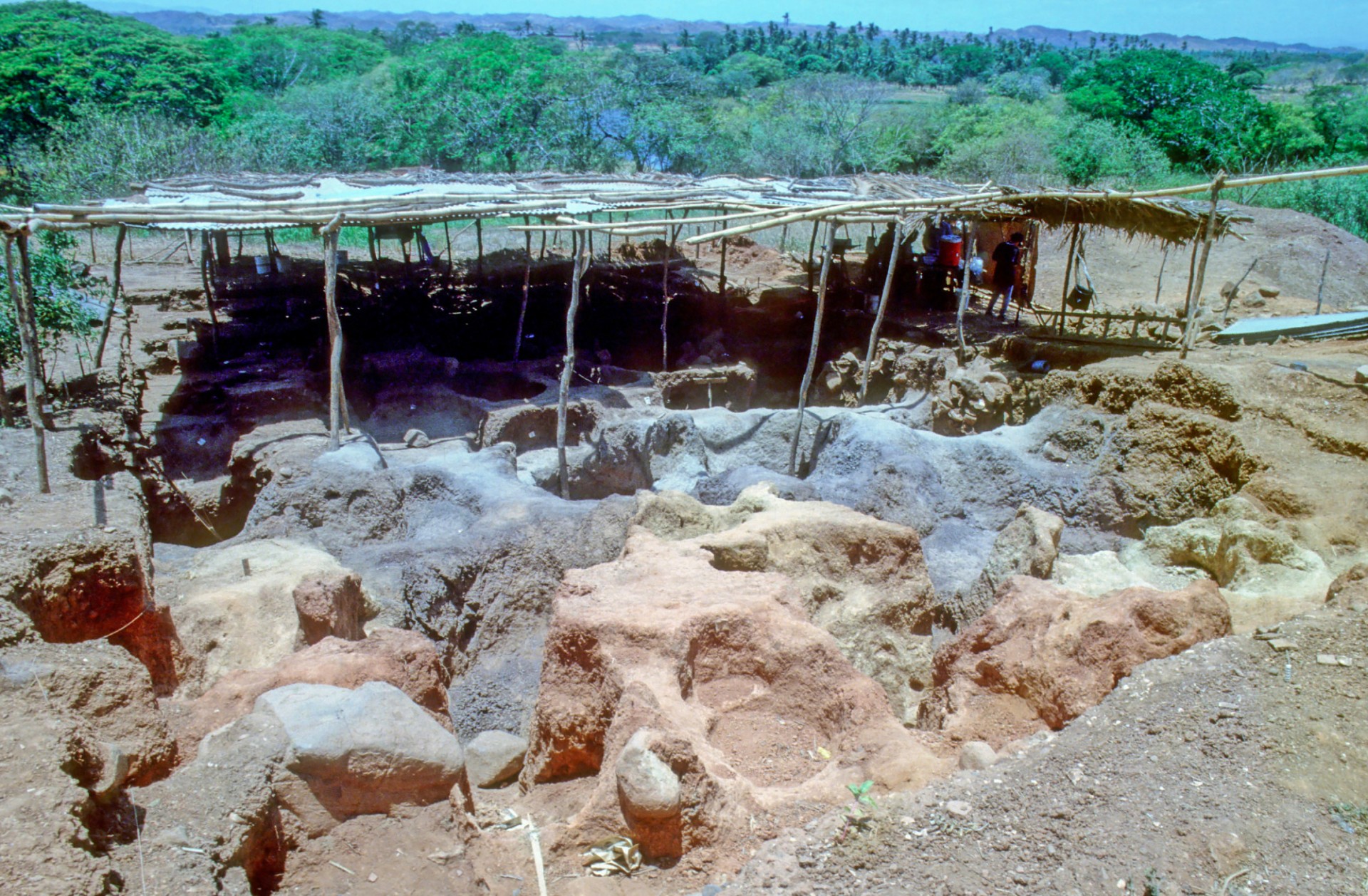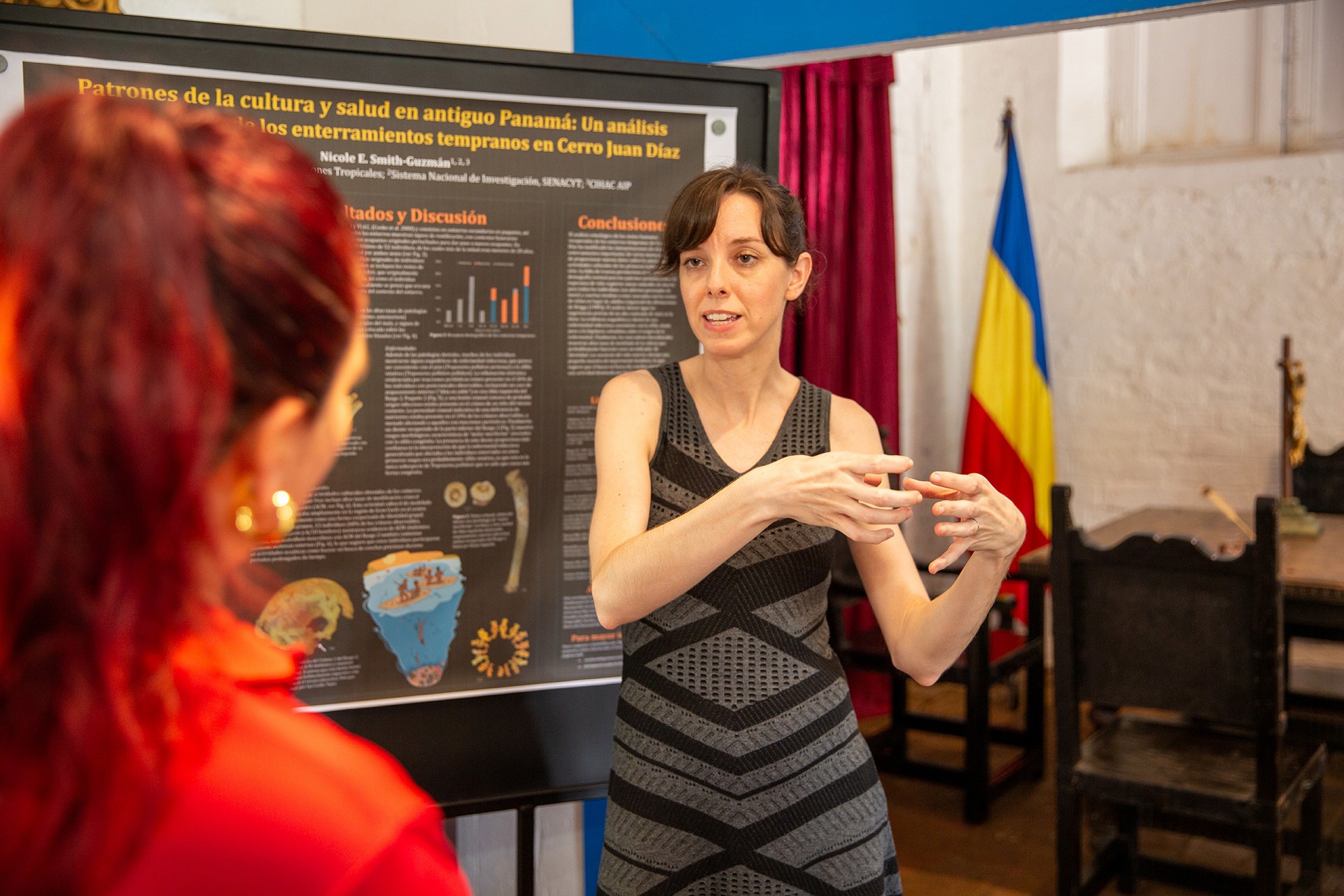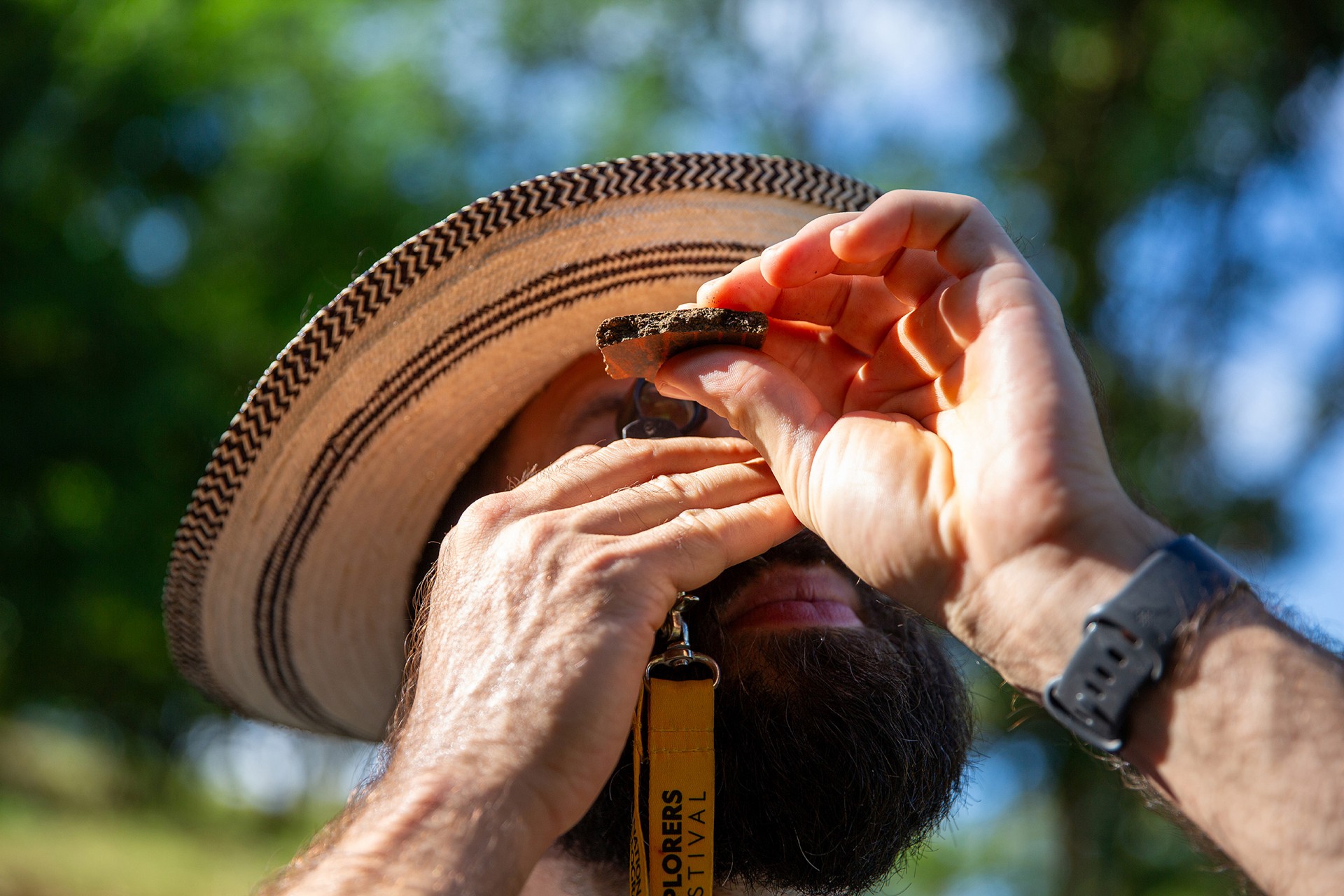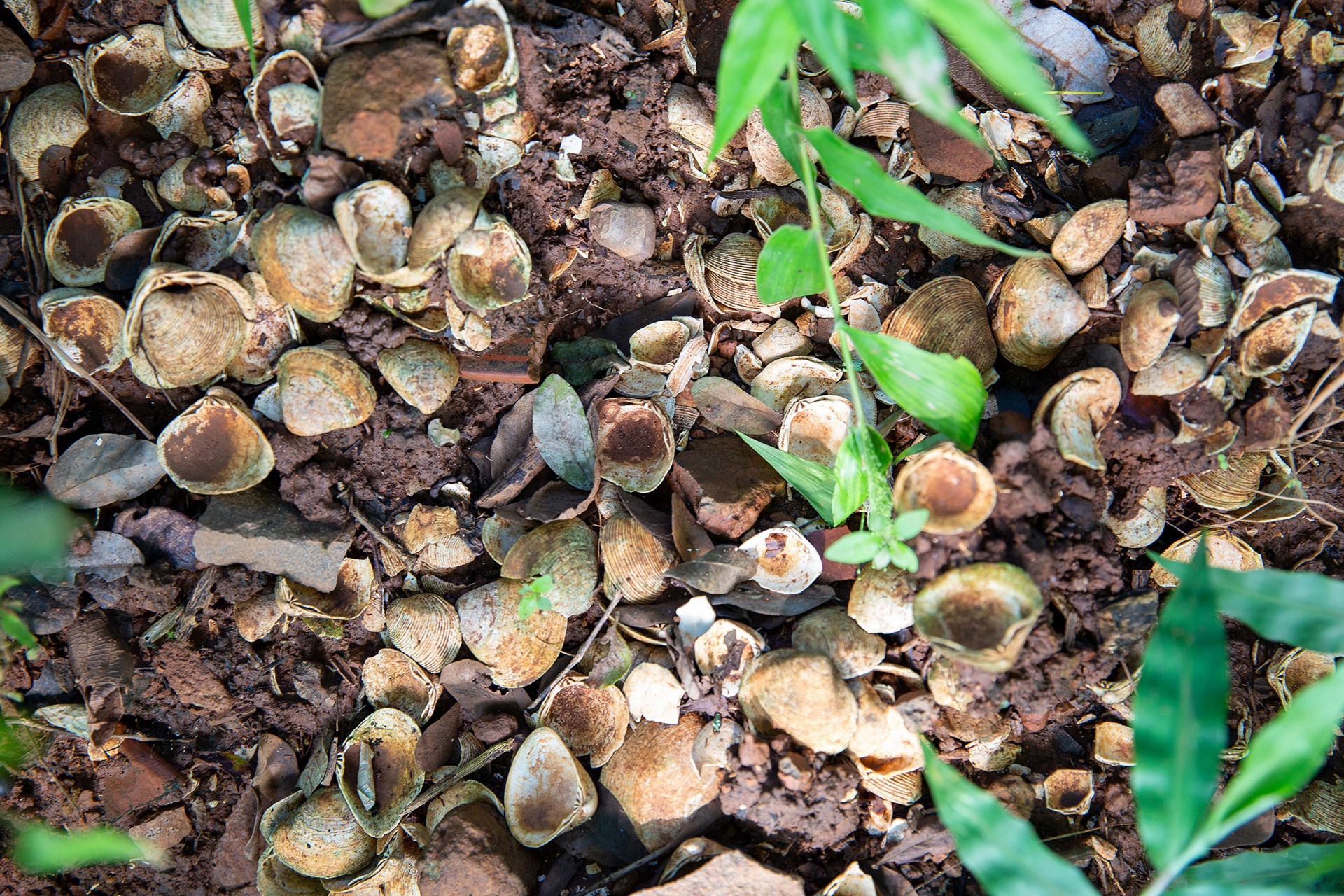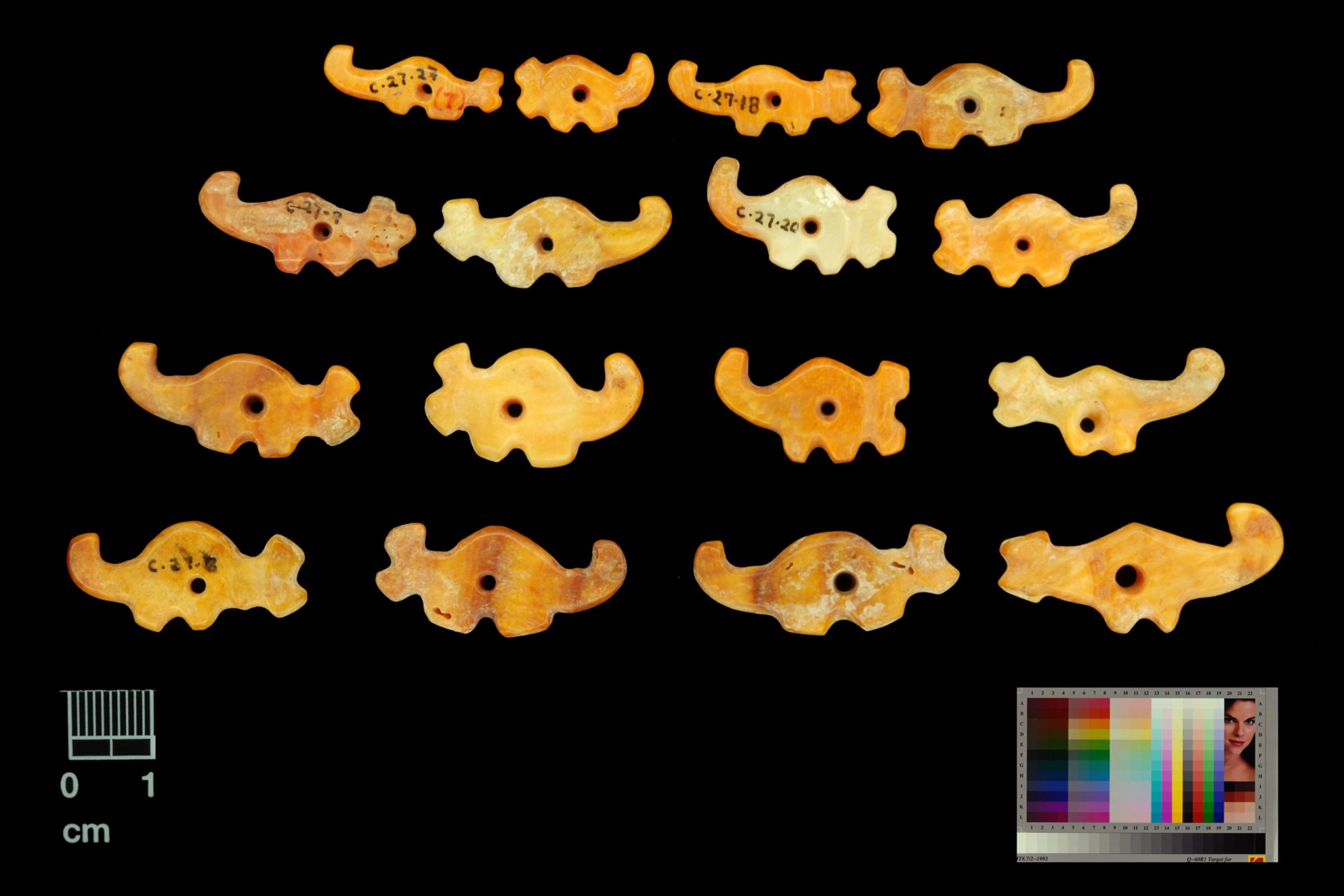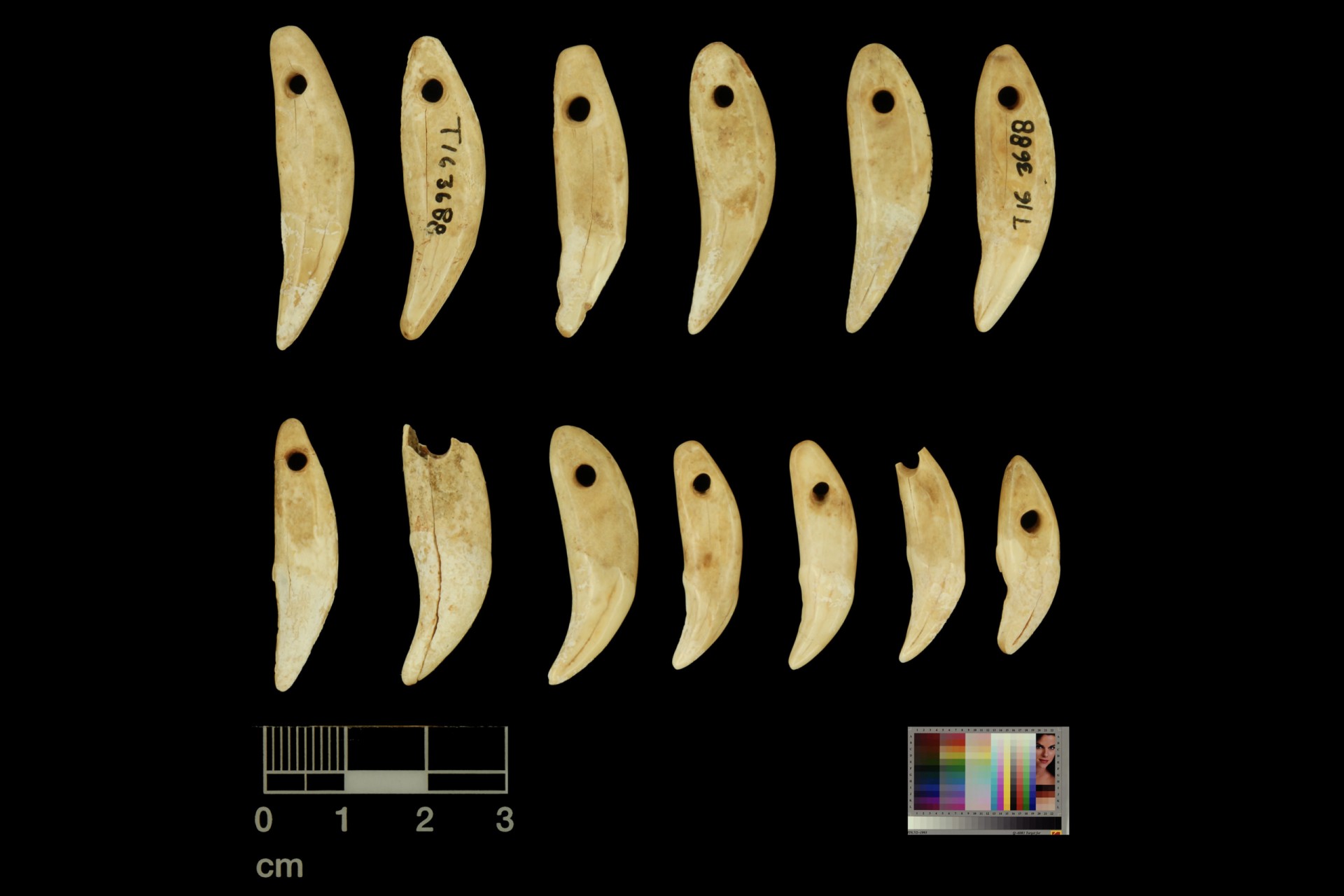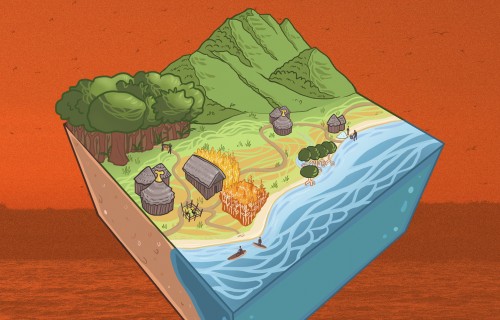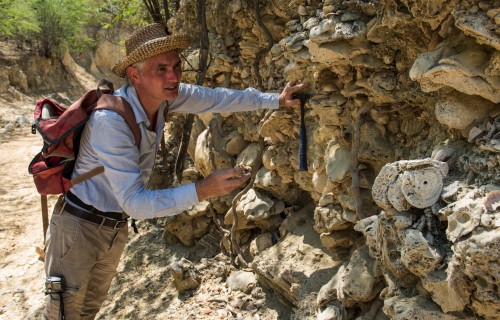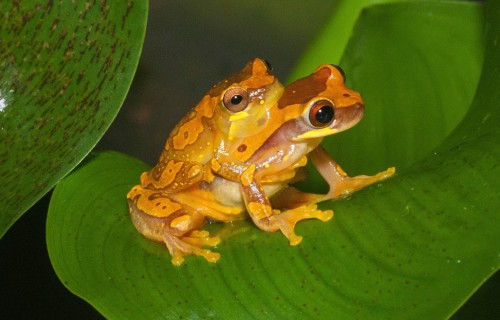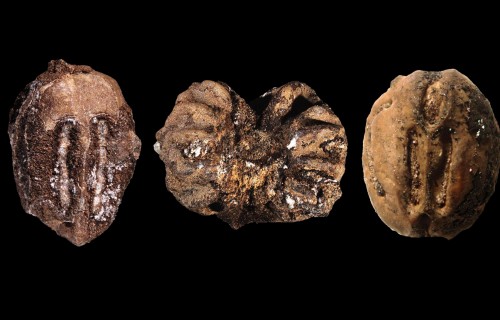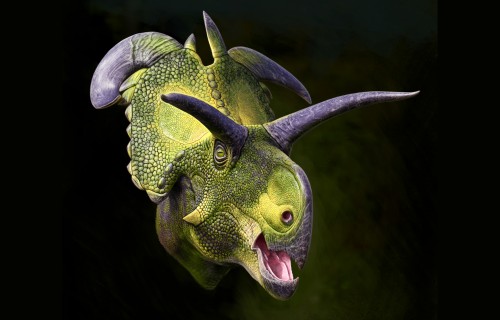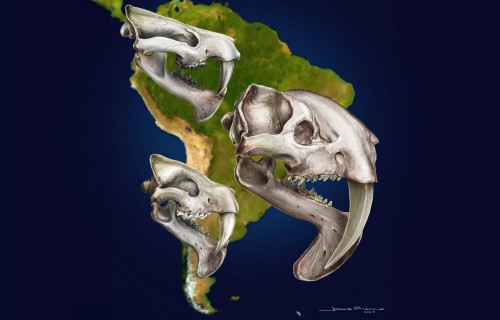Marine resource use has influenced human population on the Central American Isthmus for millennia
Burial
traditions
Archaeologists study the connections
between the deceased buried at
Cerro Juan Díaz, Panama
By: Vanessa Crooks
Individuals recovered at the archaeological site of Cerro Juan Díaz shed more light on how the local communities buried and honored their dead.
We might be able to tell whether two people are related if they have similar features, like the color of their eyes, hair or skin, their build, their gestures, etc. But what happens if they died and were buried long ago?
In a recent paper published in the American Journal of Biological Anthropology, “Biodistance Analysis via Dental Phenotypic Diversity in Early Collective Burials at Cerro Juan Díaz, Panamá (30–650 CE)”, co-authors Nicole E. Smith-Guzmán, Jeny Smid Núñez, Jonathan D. Cybulski and Luis A. Sánchez Herrera used biodistance analysis to find similarities between the remains of individuals in burials found at the archaeological site of Cerro Juan Díaz, to understand how people buried together may have been related.
Biological distance or biodistance analysis uses data derived from skeletal remains to determine similarities between individuals, and thus whether they could be related or not. Human skulls are generally examined to find these similarities; however, teeth also work.
The field excavations of Cerro Juan Díaz, located in the Azuero Peninsula in the coastal lowlands of central Pacific Panama, were directed by Luis Sánchez Herrera and supervised by Richard Cooke.
Credit: STRI Archaeology Lab
“The same way we look more like our sibling than our cousin, our teeth also more closely resemble those of our close relatives than anyone else’s,” said lead author and STRI curator Smith-Guzmán. “Teeth play an important role in our survival, so genes carefully control how they develop. And since they are very resistant through time, we can obtain genetic clues from teeth.”
“This is the first published study using biological distance methods to understand the relatedness between individuals buried within an ancient Panamanian cemetery context,” she added.
Cerro Juan Díaz, in the coastal lowlands of central Pacific Panama, was the site of a pre-Columbian village (200 B.C.–A.D. 1520). Between 1992 and 2001, the late STRI staff scientist Richard Cooke supervised field excavations to recover intact archaeological contexts, including numerous human burials from different time periods. Co-author Sánchez Herrera, of the Department of Anthropology and History of the Museo Nacional de Costa Rica, directed most of the excavations at Cerro Juan Díaz. In 2021, Sánchez Herrera, Smith-Guzmán and Cooke published a bioarcheological analysis of the earliest graves of Cerro Juan Díaz, which dated to the Middle Ceramic Period. This biodistance analysis looked at the same burials.
Previous studies have pointed out that, during this period in the Greater Coclé region, people commonly reused burial spaces for burying multiple individuals, as well as preserved and interacted with their dead for a longer period. However, it was yet unclear how the individuals in these collective burials were related, either biologically or socially.
“When the burials at Cerro Juan Diaz were excavated, the first hypothesis was based on existing literature and what we know about indigenous groups today—that people were likely buried together in these multiple tombs because they were family members,” stated Smith-Guzman. “And that was the hypothesis for many, many years, but we had no way of testing it until now.”
Smith-Guzmán became interested in biodistance analysis to get around the limitations of another method: ancient DNA analysis, which uses DNA extracted from ancient biological materials. Cooke was part of one of the first studies on ancient DNA in 2021.
But in the tropics, remains that still have sufficient DNA are scarce and often too degraded; it’s also expensive and takes a lot of time.
“Biological distance is more practical for studying genetic relatedness in ancient Panama,” Smith-Guzmán said. Co-author and University of Panama anthropology undergraduate student Jeny Smid Núñez, who was part of this study thanks to a short-term fellowship with STRI, collected most of the data, and University of Hong Kong Assistant Lecturer and former STRI fellow Jonathan Cybulski worked on the statistics.
Contrary to what was expected, the results suggest that these were not family tombs, and that community social ties, rather than just genetic relatedness, factored into how the individuals were buried in the tombs.
Researchers also looked for patterns in the biological sex among adults, to find if either men or women were marrying into the community. The hypothesis was that individuals who moved there after marriage would be biologically different, and the opposite sex would be more closely related to other individuals from the community. However, no pattern emerged, possibly due to not having enough adult samples.
Most of the remains found in these tombs were of children, which aided in the third and final hypothesis of the paper: whether children in these burials were local to the community. To the researchers’ surprise, the results suggest that most of the children buried at Cerro Juan Díaz may have been moved to the site for burial from multiple surrounding communities.
“It makes sense that people might be bringing their kids to be buried at a special site, especially if that site was not just a local village burial ground, but rather a regional community ceremonial site,” said Smith-Guzmán.
Unlike El Caño and Sitio Conte, two elite ceremonial sites in the region where very important people from different communities were buried, Cerro Juan Díaz is considered a commoner or non-elite burial ground. However, there is still a similar pattern of a broad community gathering for ceremony and funerary practice in these sites.
The reason why individuals were moved for burial is not clear yet. “We knew that in this period, children were being treated differently in burials across the region, because we see a difference in artifacts buried with them. The most valuable burial goods were being associated with children versus adults.”
The site’s proximity to the ocean is one possible motivation. Coastal sites may have been more important for burial due to the ocean’s connection to the underworld in religion and myth.
“This study helps us obtain a more accurate understanding of the funerary traditions that were taking place in the region, which often differ from the biased accounts by the Spanish during the conquest,” Smith-Guzmán said. “This clearer understanding is crucial for valuing and preserving cultural identity, as many of the same traditions and practices still exist in Indigenous communities of the Isthmus.”
The Smithsonian Tropical Research Institute, headquartered in Panama City, Panama, is a unit of the Smithsonian Institution. The institute furthers the understanding of tropical biodiversity and its importance to human welfare, trains students to conduct research in the tropics and promotes conservation by increasing public awareness of the beauty and importance of tropical ecosystems. Promo video.

